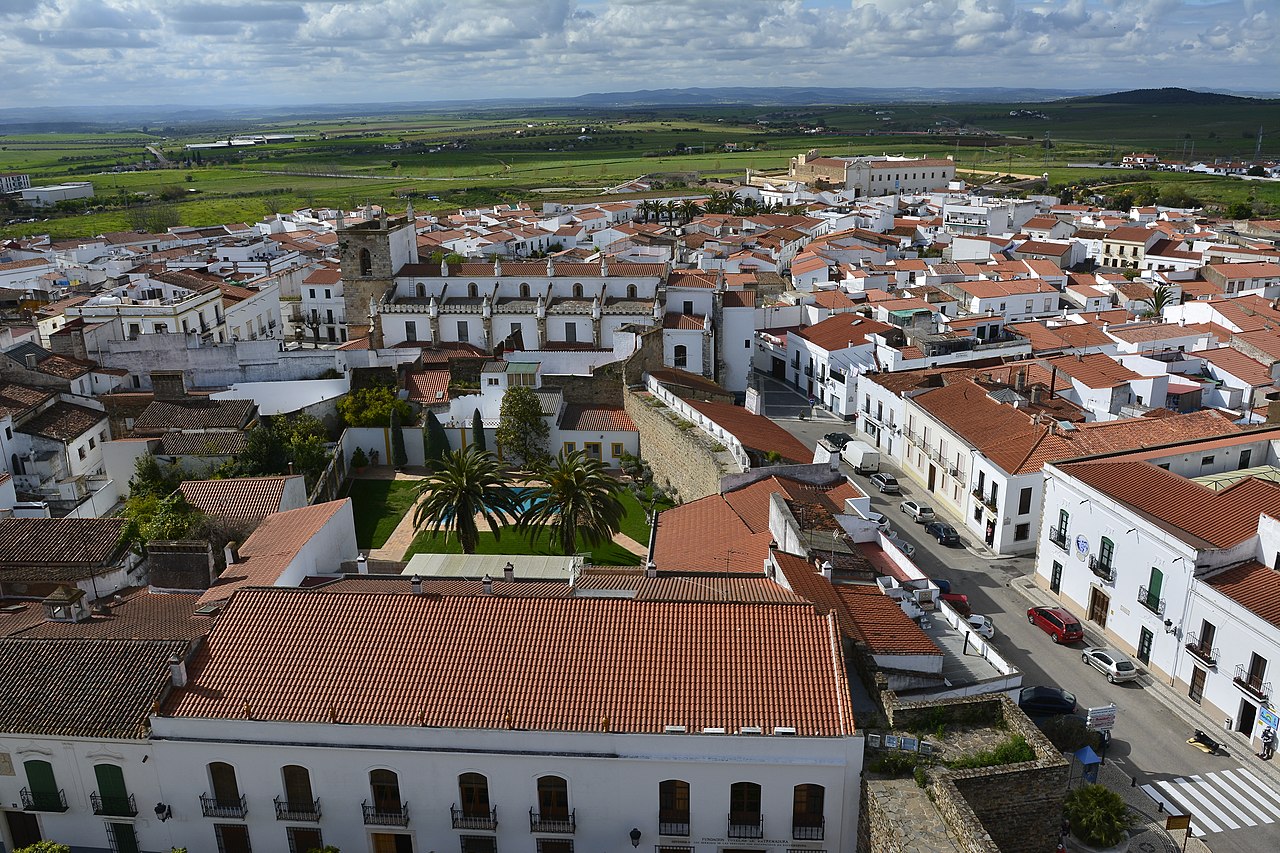
There are so many beautiful villages of Badajoz that it is difficult for us to choose the ones that we are going to present to you. The province of Extremadura is full of towns that stand out both for their monumental jewels and for their privileged landscape.
As for the latter, the fertile plains of the rivers stand out. Guadiana and its tributary, the guadalupejo, but also the plains and the mountains that, like that of San Pedro, still belong to the Montes de Toledo, although they are close to Portugal. And, regarding its monuments, Badajoz is one of the provinces with the most history in all of Spain. Former Vetton territory, later part of the Lusitania Roman to later integrate into the Muslim possessions and, finally, be recognized as a region of Castilla in the Bull Cuts from 1371. But, inevitably leaving some in the pipeline, we are going to show you the beautiful towns of Badajoz.
Olivenza, old Portuguese town
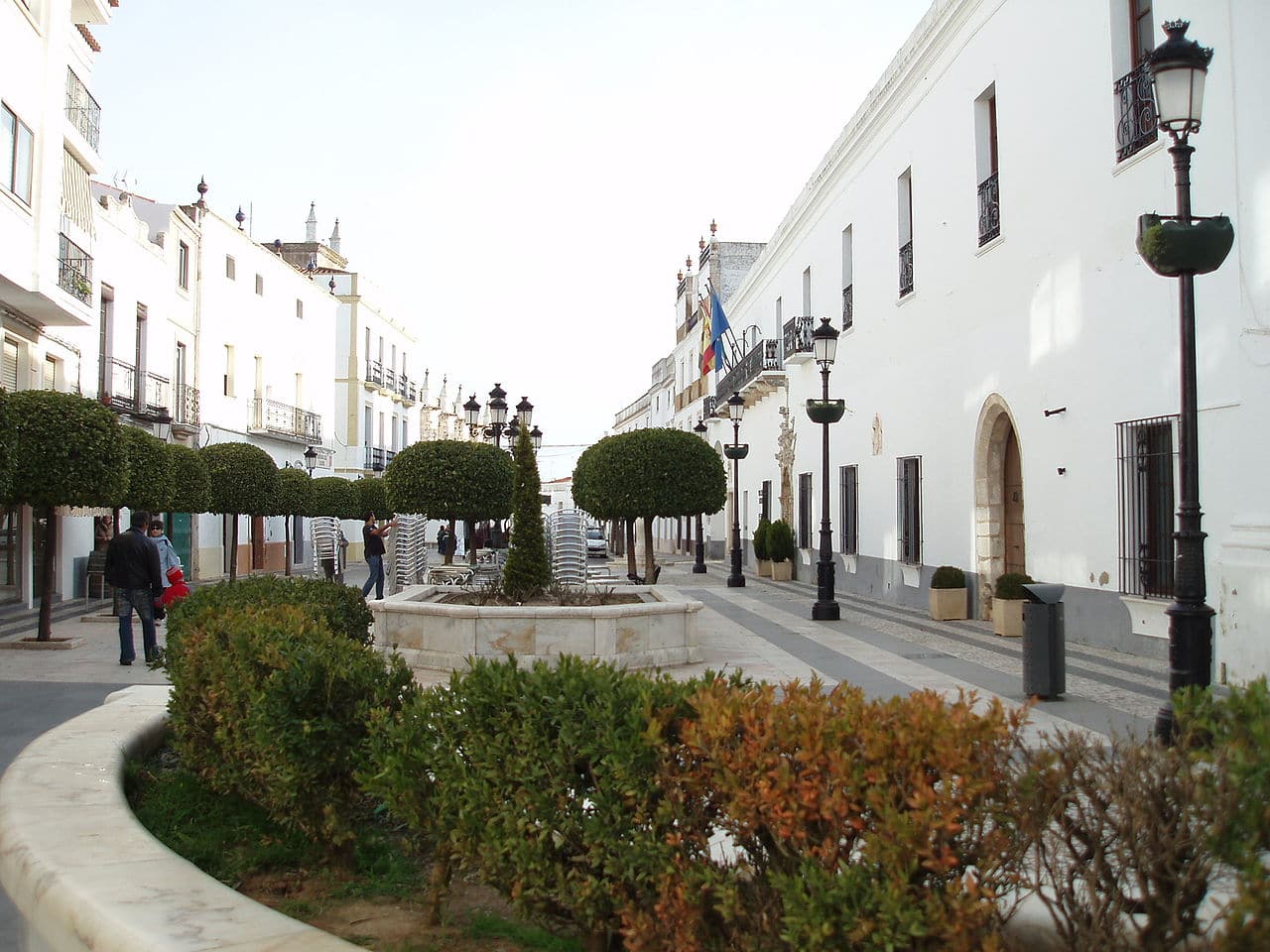
A street in Olivenza
We begin our tour in the western part of the province to tell you about this beautiful town that, curiously, has only belonged to Spain since 1801, since until then it was part of Portugal.
Its great symbol is the medieval citadel or the fortress or olivenza castle, which still preserves its great walls from the XNUMXth century, its towers and gates such as those of Alconchel, de los Ángeles, de Gracia and San Sebastián, the first two framed by two circular towers. Inside, you can see the church of Santa María del Castillo, which houses a beautiful altarpiece with the Jesse Tree.
To the late Middle Ages also belongs the ajuda bridge, which was ordered to be built by the king Manuel I of Portugal to cross the Guadiana. Partially destroyed during the War of Succession, it has never been restored.
As for the religious monuments in the town of Badajoz, we advise you to also visit the church of Santa Maria Magdalena, built by the king himself, so it responds to the Manueline style, a Portuguese variant of late Gothic. Also, you should see the Holy House of Mercy, Convent of San Juan de Dios and, already on the outskirts of Olivenza, the remains of the pre-Romanesque church of Valdecebadar. Finally, don't forget to go to the bullring, whose construction dates back to the mid-XNUMXth century, and stroll through its streets with a medieval layout.
Zafra, one of the cities of Badajoz
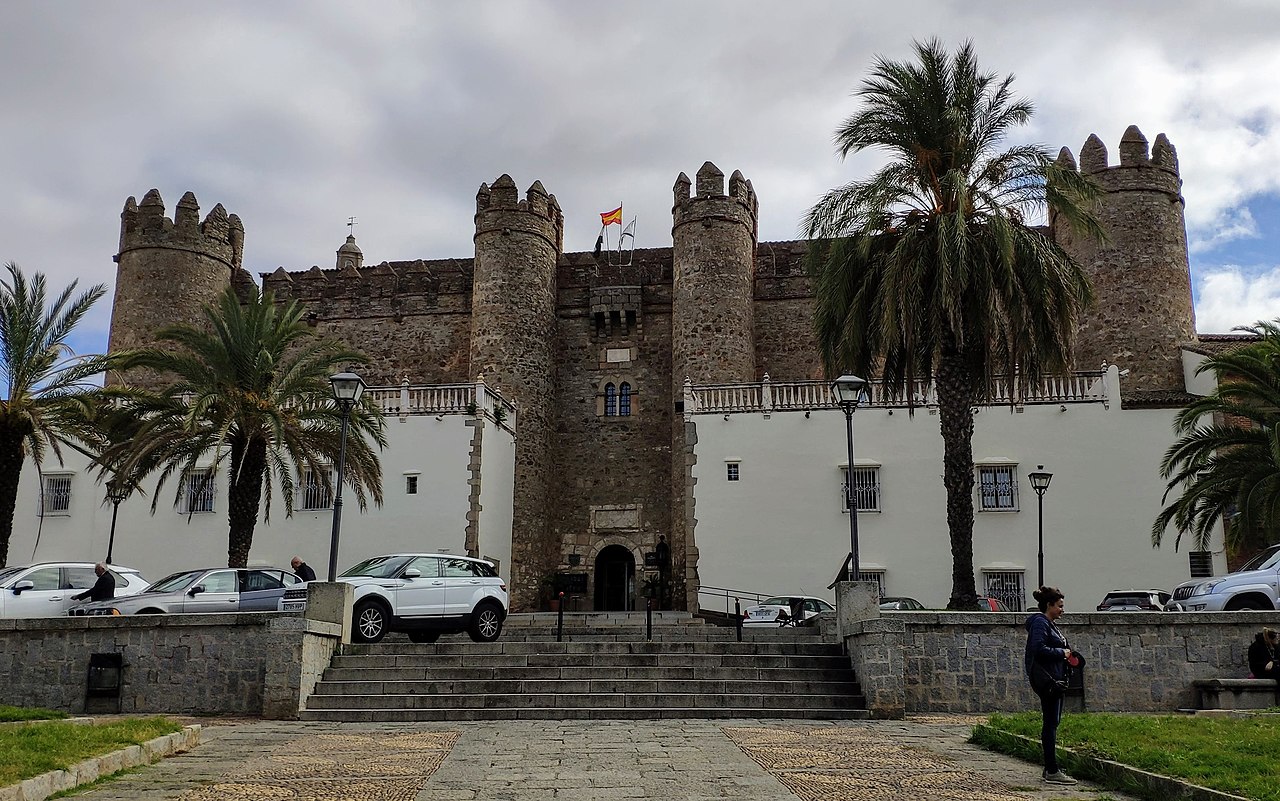
Palace of the Dukes of Feria, in Zafra
Despite having only about fifteen thousand inhabitants, Zafra holds the title of city, which was granted by the king Alfonso XII. Although it was officially founded by the Muslims, in its surroundings there are numerous remains of Roman villas, so its history is also very extensive.
But, above all, this Badajoz town stands out for its many monuments. Among the most typical of her are Plaza Grande and Plaza Chica. The first is mostly arcaded and dates from the XNUMXth century, although some arcades are from the XNUMXth. Through the call Arch of the Bread, where you can see a small altarpiece, communicates with Plaza Chica, where the famous Zafra Rod. It is a column that the merchants located in the enclosure used to measure their articles.
They are also very typical in the town of Extremadura Seville street and Carnation alley, as well as the Jerez and Cubo arches. For its part, the Town Hall is located in an old palace from the XNUMXth century. However, if we are talking about this type of construction, the most relevant in Zafra is the impressive Palace of the Dukes of Feria, current tourist hostel.
As for the religious buildings of the town of Badajoz, the spectacular Candelaria and Rosario churches, both from the XNUMXth century, as well as the hermitage of Belén and the convent of Santa María del Valle.
Llerena, one of the best pretty towns in Badajoz
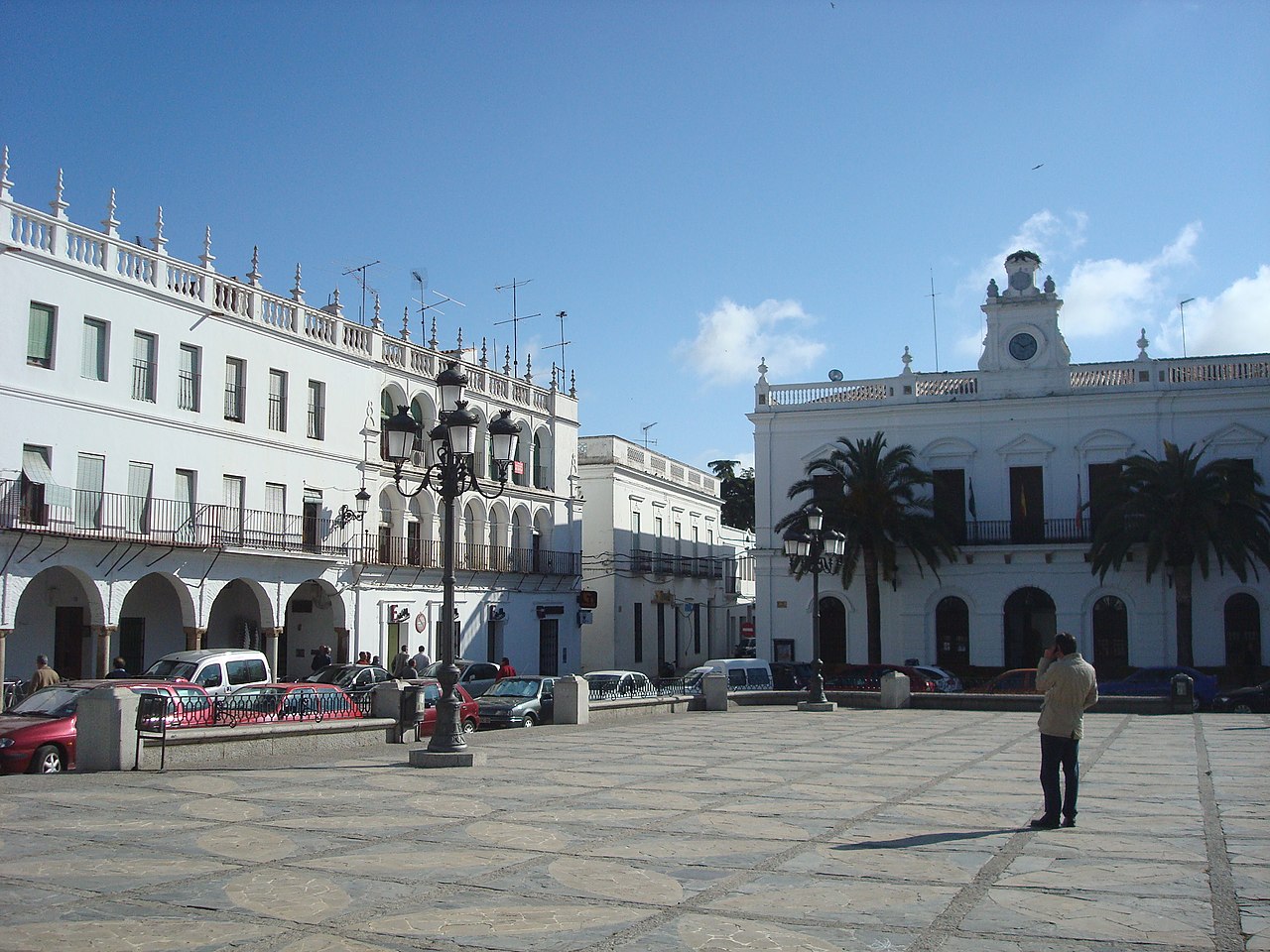
Plaza of Spain, in Llerena
With an old town declared a historic-artistic complex, Llerena is also among the beautiful towns of Badajoz. Its nerve center is Spain Square, where you can see the spectacular Church of Our Lady of Granada, with its two imposing floors with balconies. The Town Hall is also located there and close to a fountain designed by the painter Francisco de Zurbarán.
Likewise, you must see in the town of Badajoz its Wall of the thirteenth century and the Zapata Palace, where the Court of the Inquisition used to be and which has a spectacular Mudejar patio. As for religious architecture, be sure to visit the convento of Santa Clara, in whose temple there are baroque altarpieces and a carving of Saint Jerome, the work of Juan Martinez Montanes. Finally, also go to the church of Santiago and the episcopal palace.
Jerez de los Caballeros, the city of the five towers
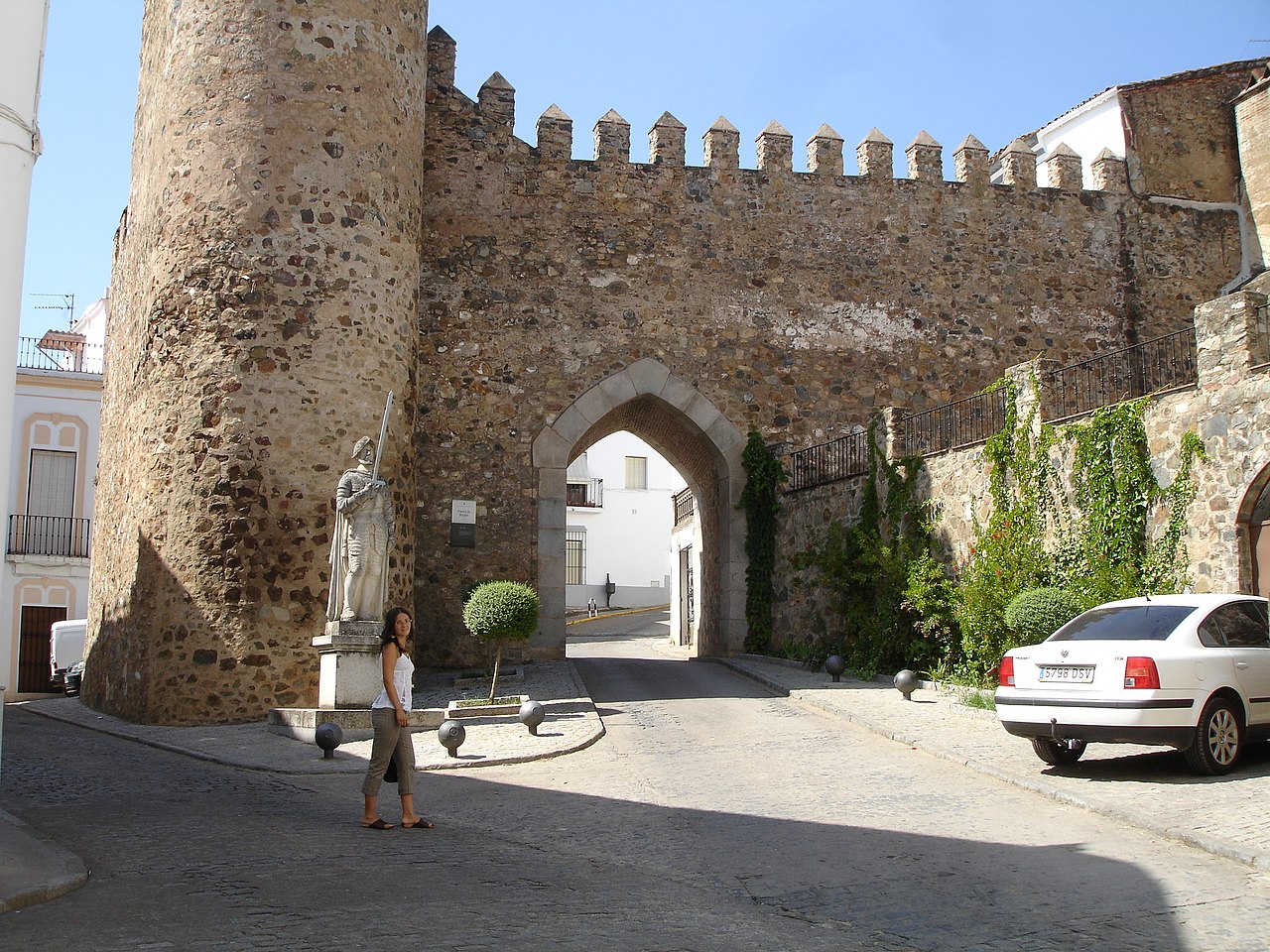
Arco de Burgos, in Jerez de los Caballeros, unique among the beautiful villages of Badajoz
Another monumental wonder among the pretty towns of Badajoz is Jerez de los Caballeros, whose main symbol is the templar castle, built in the XNUMXth century on the remains of an old Arab citadel. It is surrounded by a wall of which two gates are preserved: Burgos and Villa.
But Jerez is known as the city of the five towers for having this number of them in Baroque. Among them are those of the churches of Santa María de la Encarnación, San Miguel Arcángel and San Bartolomé, the latter stylistically related to the Giralda in Seville.
Likewise, the town of Extremadura has several convent buildings of interest. For example, those of Saint Augustine, Our Lady of the Incarnation and the Mother of God. And also with several beautiful hermitages such as those of San Lázaro, Cristo de la Vera or Los Santos Mártires. Finally, do not forget to visit the House Museum of Núñez de Balboa, where this famous conqueror was born.
Fregenal of the Sierra
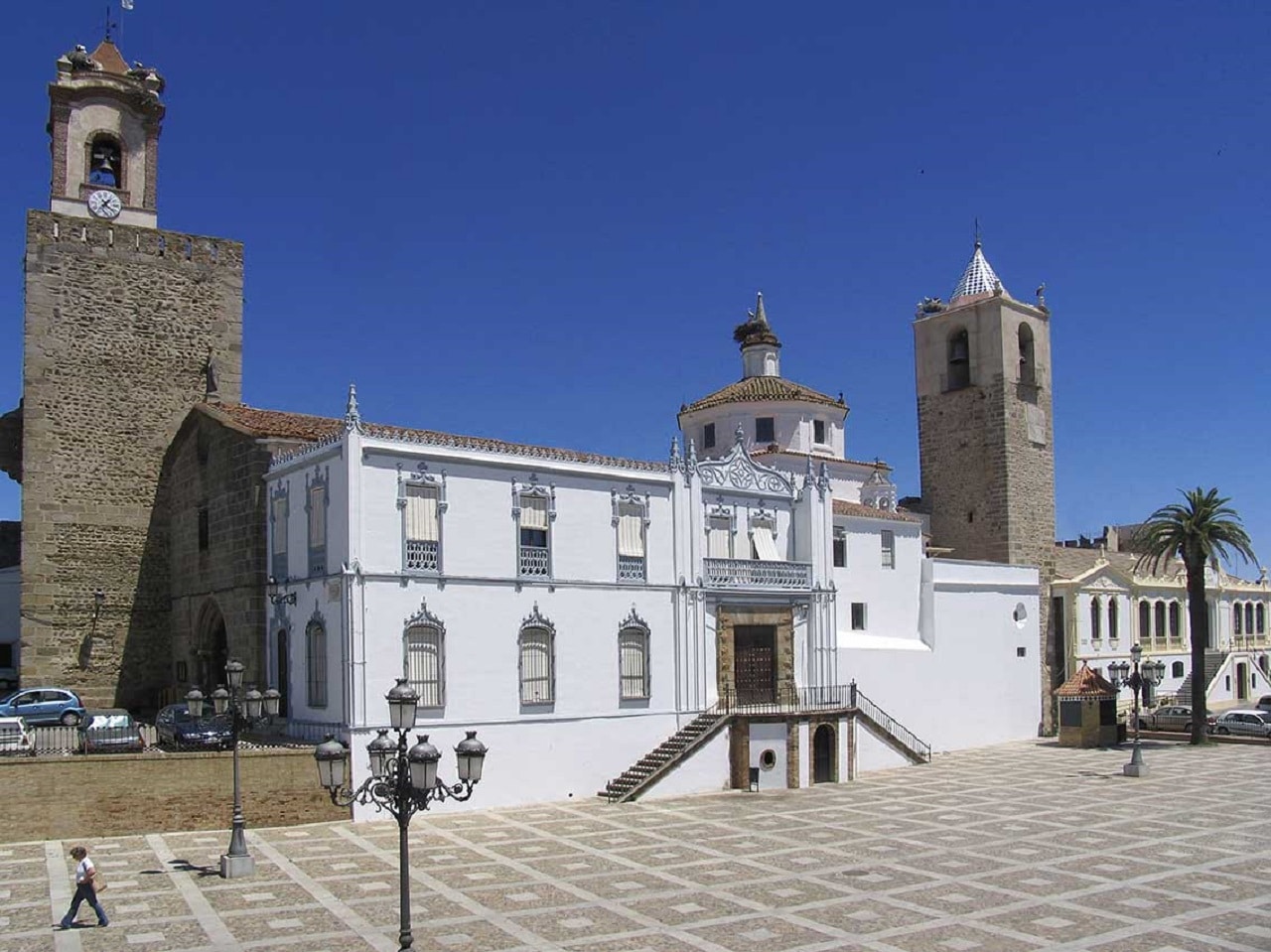
Walk of the Constitution, in Fregenal de la Sierra
Precisely adjoining the previous town on its southeast side. It is also among the beautiful villages of Badajoz that we show you for its location at the foot of Sierra Morena and for its monumental heritage. Likewise, it has a templar castle from the XNUMXth century in which older Roman and Visigoth remains have been found, which suggests that it was built on top of an earlier one.
Interestingly, in its enclosure is the bullring, which dates from the eighteenth century. And, attached to the castle, is the church of Santa Maria, also dated in the XIII, although with a greater altarpiece of the XVIII. Regarding the temples, we also advise you to visit the churches of Santa Catalina Mártir, Santa María de la Plaza and Santa Ana, as well as the convents of San Francisco, recently restored, and San Ildefonso de la Compañía de Jesús.
But, perhaps, the great patrimonial value of Fregenal de la Sierra, which is a historical-artistic complex, is its manor houses. Stand out among them that of the Penches, with an impressive Neo-Mudejar patio. But the palaces of the Counts of Torrepilares, from the XNUMXth century, of the Marquises of Riocabado, from the XNUMXth, and of the Marchioness of Ferrera, are also very beautiful.
Por último, la Fontanilla fountain It dates from the XNUMXth century and in its center it has a niche with the image of the Virgen de la Guía, while that of María Miguel has a legend about two lovers in the style of Romeo and Juliet.
Alburquerque
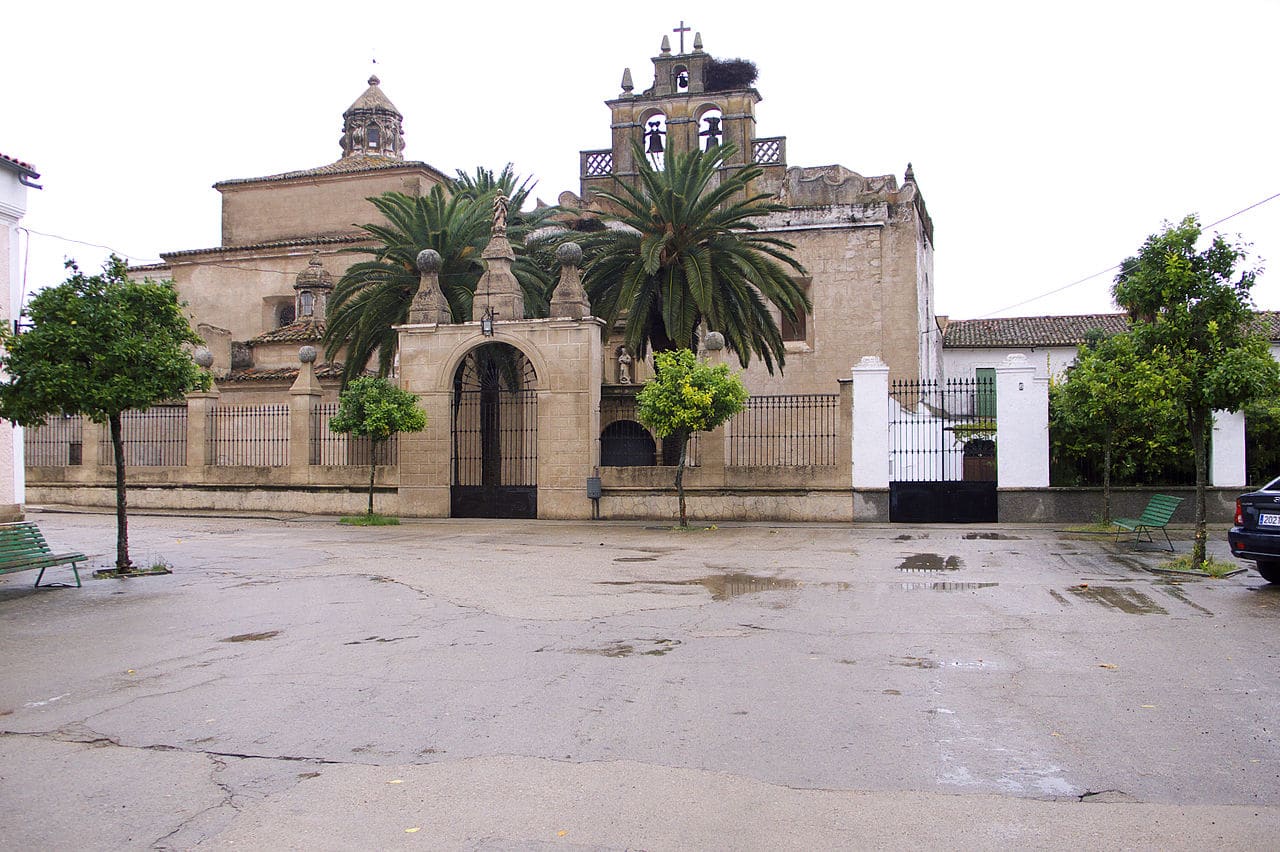
Church of San Francisco, in Albuquerque
Located northeast of the province of Badajoz, its name comes from the Latin terms albus quercus, which mean white oak. This is due to the large number of these types of trees in the area, especially cork oaks.
In fact, Alburquerque has been inhabited since time immemorial, as shown by the cave paintings of the cliff of San Blas, dating from the Bronze Age. But the great emblem of the town of Badajoz is the moon castle, built at the end of the Middle Ages and that dominates it from a hill. But he is not the only one in the area. About twelve kilometers away is the Azagala's castle, next to the La Peña del Águila dam.
It is also a witness to the medieval past of Albuquerque its walled enclosure, with towers such as the Clock or the Cabera and its Gothic quarter, known as Villa Inside and declared an artistic historical complex. For its part, the Church of Santa Maria del Mercado It was built between the XNUMXth and XNUMXth centuries, although it was reformed in the XNUMXth. Inside, you can see a valuable carving of the Cristo del Amparo.
It is not the only interesting temple that you can visit in Albuquerque. The church of San Mateo is Renaissance, that of San Francisco has an interesting Churrigueresque altarpiece, as does the altar of the Sanctuary of Our Lady of Carrión, and the hermitage of Nuestra Señora de la Soledad is of baroque style. Finally, Santa María del Castillo is a late Romanesque temple.
In conclusion, we have made a journey with you through some of the beautiful villages of Badajoz. But, as we told you at the beginning, you can find many others in the province of Extremadura. For example, Burguillos del Cerro, declared a Site of Cultural Interest, Fair, with its XNUMXth century castle, Azuaga, with its church of Nuestra Señora de la Consolación, which is the largest in the entire province, or Fresno Riverside, with its imposing house in Vargas-Zúñiga. Don't you feel like visiting all these wonders?